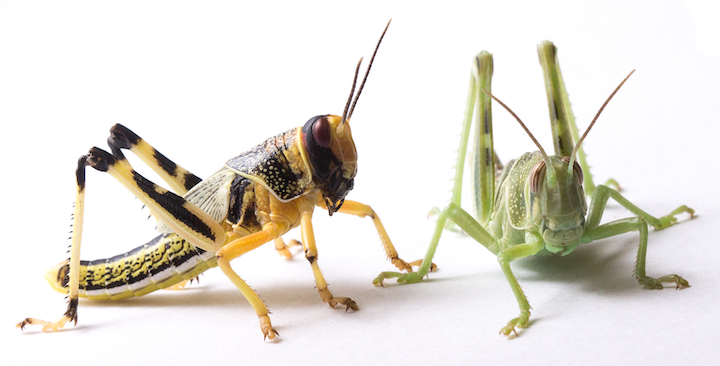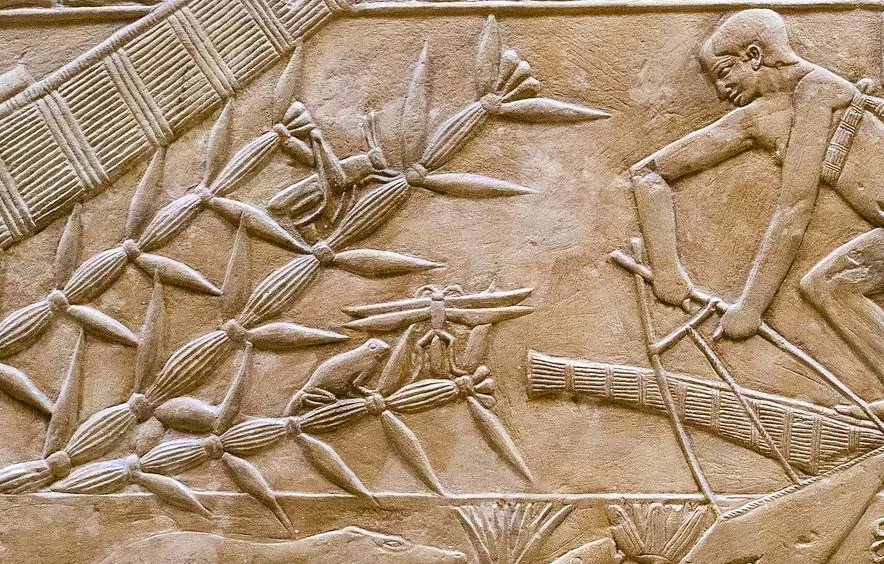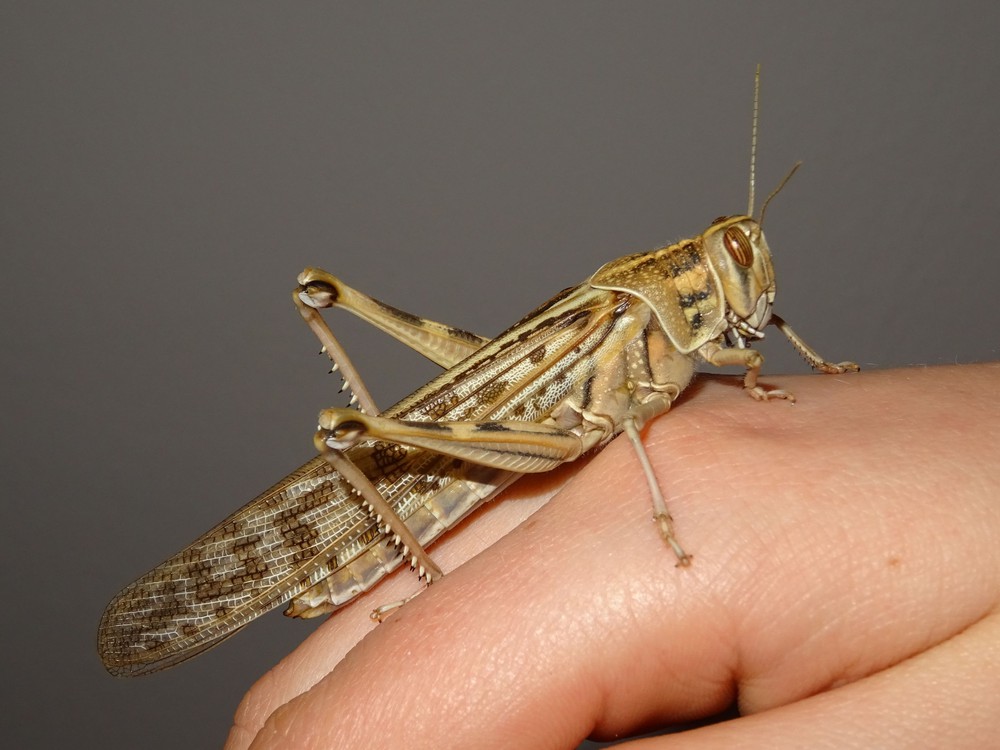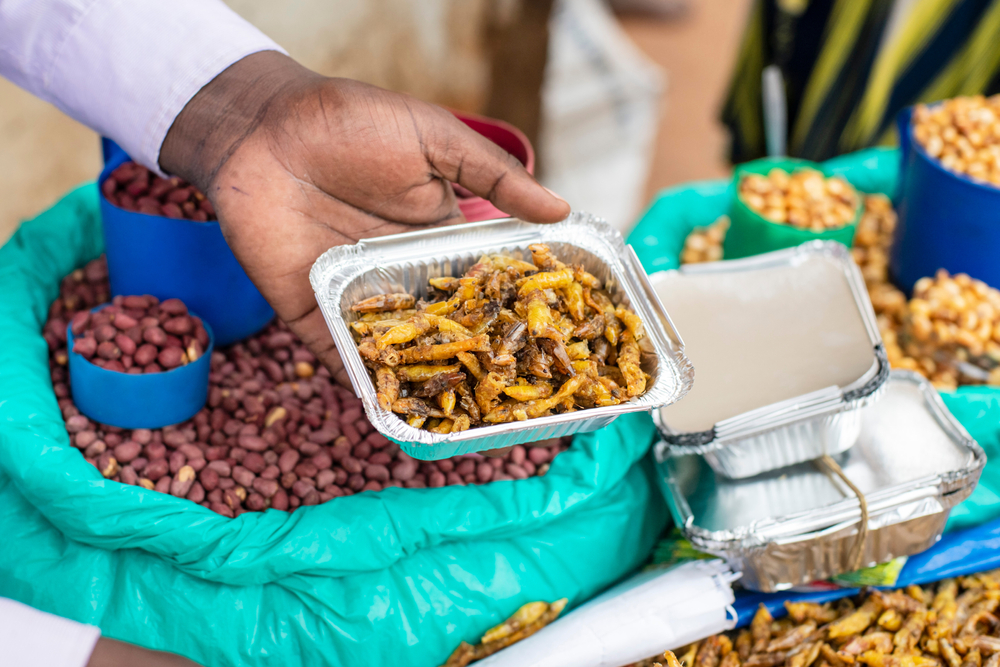In the description of John the Baptist given to us in the gospels of Matthew and Mark, the authors include what seems to be an obscure detail about his diet – that he was eating locusts and honey.[1] To readers with modern western sensibilities, this seems to serve only as an indicator of this man’s very eclectic lifestyle. Such a view makes it difficult to understand why crowds of people went out to the desert to hear him preach. To understand the inclusion of this seemingly odd detail, we need to look at this man through a different set of lenses – ones colored by Old Testament insight.
Not only do the gospel writers tell us about John’s diet, they also described his clothing which was made from camel’s hair and held in place with a leather belt. This detail would not have been lost on the Hebrews who first read these gospels. John’s clothing served to identify him with other biblical prophets like Elijah who wore similar garments. That John was a prophet is more directly stated later on in Matthew.[2] So, what would John’s diet have signified to those first readers – particularly the eating of locusts?
To get a grasp on this, we need to understand what locusts are in the first place. Then, we need to look back into Old Testament history to see what their experience was with locusts. Finally, we should examine what the Torah instructed in regard to eating locusts. After all that, I think John’s diet will come into focus for us.
The term “locust” refers to any one of 21 known species of short-horned grasshoppers worldwide, but not all grasshoppers are locusts .[3] The distinction between locusts and other types of grasshoppers is not as much morphological as it is behavioral. These grasshoppers live predominantly solitary lives but certain environmental conditions will cause a dramatic shift in their appearance and activity. Heavy rains and rapid vegetation growth following a drought will alter hormone levels within these species to spur on an increase in breeding activity and a shift toward gregarious behavior. The gregarious offspring will have a different coloration and a larger size than their solitary parents.

When the resulting gregarious offspring reach their winged adult stage, they will move together in large swarms which effectively strip vegetation wherever they go. It is reported by the FAO that a 1 km2 swarm may consume enough food in a day to feed 35,000 people. These swarms can travel downwind up to 90 miles (150 km) in a day.[4] Locusts have a 3-month life cycle, so it takes several years for an outbreak to develop. Most outbreaks will last for several years, but can subside in six months. A plague which occurred between 2003 and 2005 in sub-Saharan Africa resulted in an 80-100% crop loss in affected areas.[5] In North America, we are less familiar with such events because the locust which once plagued this continent disappeared early in the 20th century.[6]
Swarms of locusts have plagued humans for millennia. They were familiar enough to the Egyptians four thousand years ago that they were depicted in decorations found in Egyptian tombs (6th Dynasty, 2420-2270 BC). These depictions are probably of the solitary phase – who would want to depict catastrophic swarms of locusts in your final resting place? So, the arrival of locusts in the Exodus plagues would not have been surprising to the Egyptians of that time except for their sudden appearance and disappearance on the scene. This was accounted for by God’s use of a strong east wind which brought the swarms of locusts into Egypt, and a strong west wind which removed them.[7]

Egypt was not the only nation to suffer under the invasion of locusts. Moses warns the nation of Israel that they too could face a similar fate if they chose to disobey God and worship the gods of other nations – that a plague of locusts would destroy the crops in their fields and strip the leaves from their trees.[8] Solomon in his temple dedication also intimates that locusts may come upon the nation because of their disobedience, but prays that God will be faithful and turn back His wrath if the people come to God in the temple with repentant hearts.[9]
The prophet Joel describes a severe infestation of locusts which involved waves of locust swarms: “What the locust swarm has left, the great locusts have eaten; what the great locusts have left the young locusts have eaten; what the young locusts have left other locusts have eaten.” The infestation was so severe that “It has laid waste my vines and ruined my fig trees. It has stripped off their bark and thrown it away, leaving their branches white.” The prophet sees this locust invasion as a harbinger of worse things to befall them unless they repent: “Return to the Lord your God, for he is gracious and compassionate, slow to anger and abounding in love, and he relents from sending calamity.”[10]

Unfortunately, plagues of locusts did not always result in repentant hearts necessitating stronger measures to get their attention.[11] In the days of Gideon, as a consequence for their disobedience, the nation of Israel is invaded, not by actual locusts, but metaphorical ones. The Midianites and Amalekites swarm in and impoverish the land just as real locusts would do.[12] While God used foreign nations to rebuke and restore Israel, the prophets Isaiah and Jeremiah inform the people that Egypt and Babylon will later be destroyed by invading armies which will swarm in like locusts.[13] To be clear, the destruction of these nations was not because they invaded Israel, but because of their own brand of wickedness.
The prophet Nahum aptly describes locusts when he warns the Ninevites of their pending destruction both by armies of foreign nations and by their own corrupt merchants and military leaders.[14] Invading armies will “devour you like a swarm of locusts. Multiply like grasshoppers, multiply like locusts!” Of the merchants he declared, “like locusts they strip the land and then fly away”. Of the officials he writes they are like “swarms of locusts that settle in the walls on a cold day – but when the sun appears they fly away, and no one knows where”. Indeed, Nineveh does seem to vanish in history until archaeologists uncovered the city in 1845.

Whether real or metaphorical locusts, the perspective of the prophets was that they are all sent by God to turn the hearts of the people back to him. Sometimes we are perplexed how God could call his creation “good” when it includes animals such as locusts which bring so much harm to humans. The destruction by locusts results in famine and the death of both humans and their livestock. I think, from God’s perspective, for locusts to be “good” means that they are useful for accomplishing His purposes. There is a greater good which may come as a result of human suffering. It has been said that God cares more about our character than our comfort.
Now, given this somewhat frequent reference to locusts, it is likely the Hebrews were beset by locusts on many occasions in their history. So, what is one to do when all of your crops are eaten by a swarm of locusts? The most obvious answer is, eat the locusts! There seems to be provision for this in the Levitical dietary laws. They were forbidden from eating all flying insects with the exception of “any kind of locust, katydid, cricket or grasshopper”.[15] Most insects are regarded as unclean either because many insects consume dead organisms or have some greater importance (e.g. honey bees). Hopper insects are easily identified and clearly are plant eating, so they apparently are acceptable as food.
Nutritional analysis of locusts indicates that they can be a good food source. Pound for pound, they contain amounts of protein and fats comparable to other meat products. They are also better sources of some vitamins than what is found in meat (e.g. A, D, B12). Unlike red meats, locusts contain important polyunsaturated fats such as Omega-3 and Omega-6, and some sterols which aid in preventing heart disease. Currently, locusts are consumed in 65 countries. They are prepared in a variety of ways (wings and hind legs usually removed) including boiling, toasting, roasting, frying, sun-drying and even raw. Their taste is compared to that of walnuts and almonds.[16] Perhaps John the Baptist gave us an example worth following, but I doubt that was the point in the gospels.

So, this does bring us back to John the Baptist who “wore clothing made of camel’s hair, with a leather belt around his waist, and he ate locusts and wild honey.” It was typical for prophets to convey their message via physical actions[17]. It is also not unusual to have physical food compared with spiritual food or a spiritual message.[18] While the description of his clothing says something about his role as a prophet, I think what John was eating is telling us something about his message.
As we have seen here, the locust represents a warning to people about consequences for their disobedience to God, and reminds us how God used this insect to turn people back to him. John’s consumption of locusts was symbolic of this and aligned with his message. John the Baptist’s preaching called for repentance from those who listened to him. Most notably, he called out Herod for his inappropriate marriage relationship.
Honey on the other hand is symbolic for God’s fulfillment of his promises (read more about bees and honey in Sweeter Than Honey). Within God’s covenant with Israel, he promised to bring them into a land flowing with milk and honey. John’s message to the people was also about God fulfilling his promise of a coming Messiah and pointing everyone’s attention to that person – Jesus of Nazareth.
I recognize I took a long road to get to a small point, but hopefully you gleaned some benefits along the way, that you: 1) learned a little biology, 2) gave some consideration to the potential of insects as a food source, 3) gained a greater appreciation for life and culture in biblical times, and 4) became aware of the ongoing challenges some people face in developing countries. More importantly, I hope you can see the value of having cultural background knowledge to aid in understanding scripture. Above all else, I hope this demonstrates how God uses elements in his creation to direct the affairs of man.
[1] Matthew 3:4 and Mark 1:6
[2] Mattthew 11:13-14
[3] These grasshoppers are classified in the family Acrididae which derives its name from the Greek word used in the New Testament for grasshoppers – ακρίς (akris). There are 11,000 species within this family, so only a small percentage are locusts. The locust behavior is found in a number of genera.
[4] The Food and Agricultural Organization of the United Nations https://www.fao.org/locusts/en/ accessed 4/9/2024
[5] Le Gall Marion, Overson Rick, Cease Arianne. A Global Review on Locusts (Orthoptera: Acrididae) and their Interactions with Livestock Grazing Practices. Frontiers in Ecology and Evolution Volume 7 (2019) https://www.frontiersin.org/articles/10.3389/fevo.2019.00263. Accessed 4/9/24.
[6] Jeffrey A. Lockwood. Locust: The Devastating Rise and Mysterious Disappearance of the Insect that Shaped the American Frontier (New York; Basic Books, 2004)
[7] Exodus 10:1-19, Psalm 105:34-35
[8] Deuteronomy 28:38-42
[9] 1 Kings 8:37-40, 2 Chronicles 6:28-30, 7:13-14
[10] Joel 1:4,7 and 2:13
[11] Amos 4:9-10
[12] Judges 6:1-6, 7:12
[13] Isaiah 33:4, Jeremiah 46:23, 51:14, 27
[14] Nahum 3:15-17
[15] Leviticus 11:20-22. Note: many skeptics scoff at the description in this verse which refers to “flying insects that walk on all fours” – somehow presuming the Hebrews were unable to count. This certainly is an arrogant position to take. This most likely is not an enumeration of legs, but an indication of the animal’s position when walking. If you were to imitate an insect walking you would “walk on all fours”.
[16] J. P. Egonyu, etal., Global overview of locusts as food, feed and other uses. Global Food Security, Vol 31 (2021), https://doi.org/10.1016/j.gfs.2021.100574, accessed 4/4/24.
[17] Ezekiel 4:1-8, 5:1-2, Jeremiah 13:1-10, Hosea 1:2-3, Acts 21:11
[18] Deuteronomy 8:3, Matthew 4:4, John 4:34, Hebrews 5:12-14